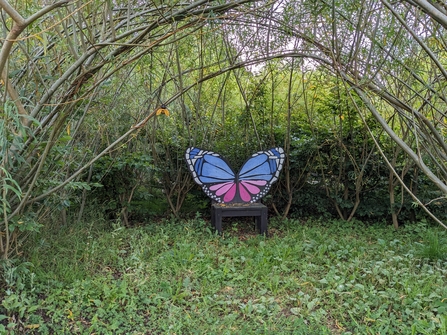Katie from the Wilder Communities team recently spoke to Dannie and Andrew from Leafy Fields Glamping, in Ashill, Mid Devon. Since June 2016, they have transformed the site from an empty field to an oasis for wildlife and families to enjoy.
Located on the edge of the Blackdown Hills National Landscape, the site had amazing potential for wildlife, but lots of work needed to be done. The site had previously been used for horses, sheep and the occasional chicken, resulting in compacted, clay-like soil, which was incredibly difficult to grow on. After a lot of hard work, determination, and large amounts of manure and organic matter from nearby farms, their improvements to the land started to take shape.










